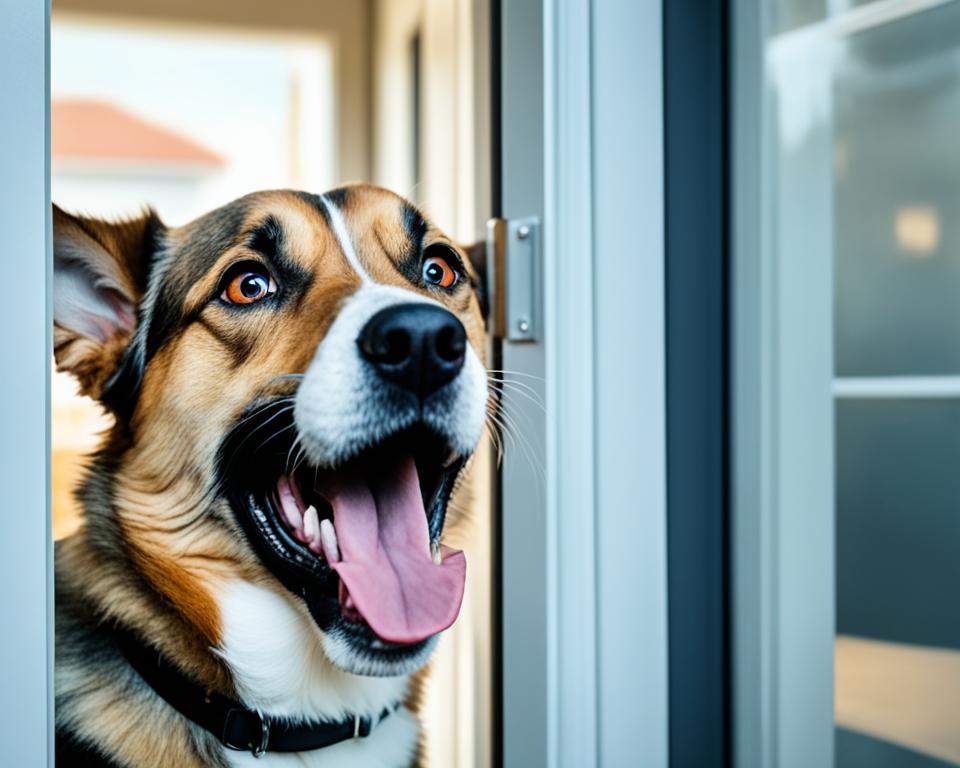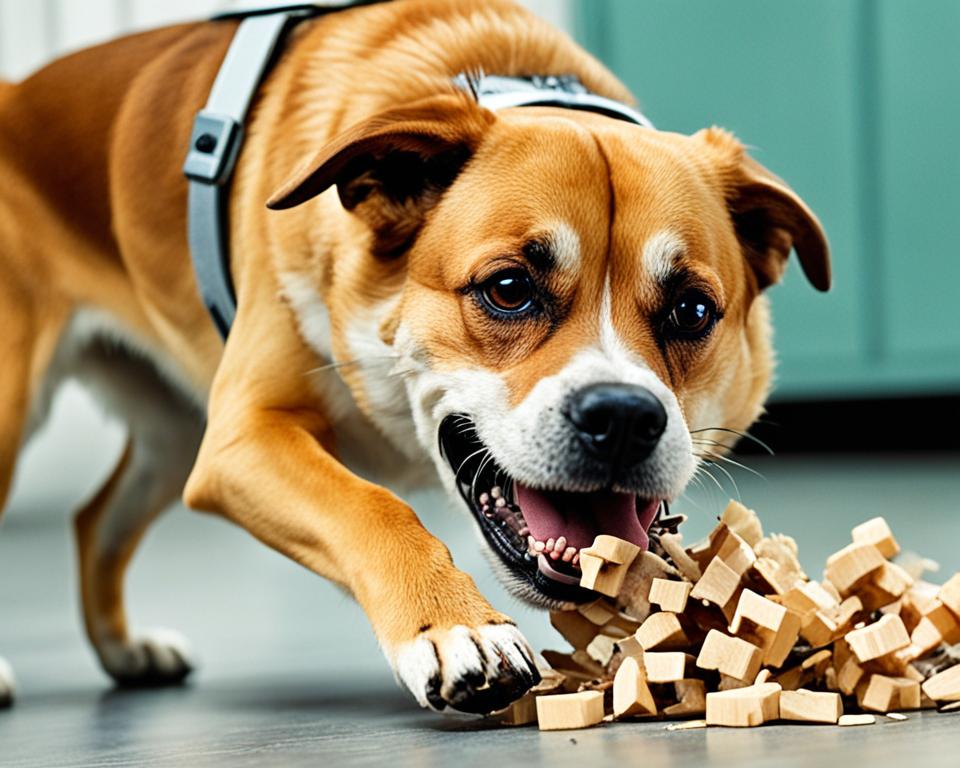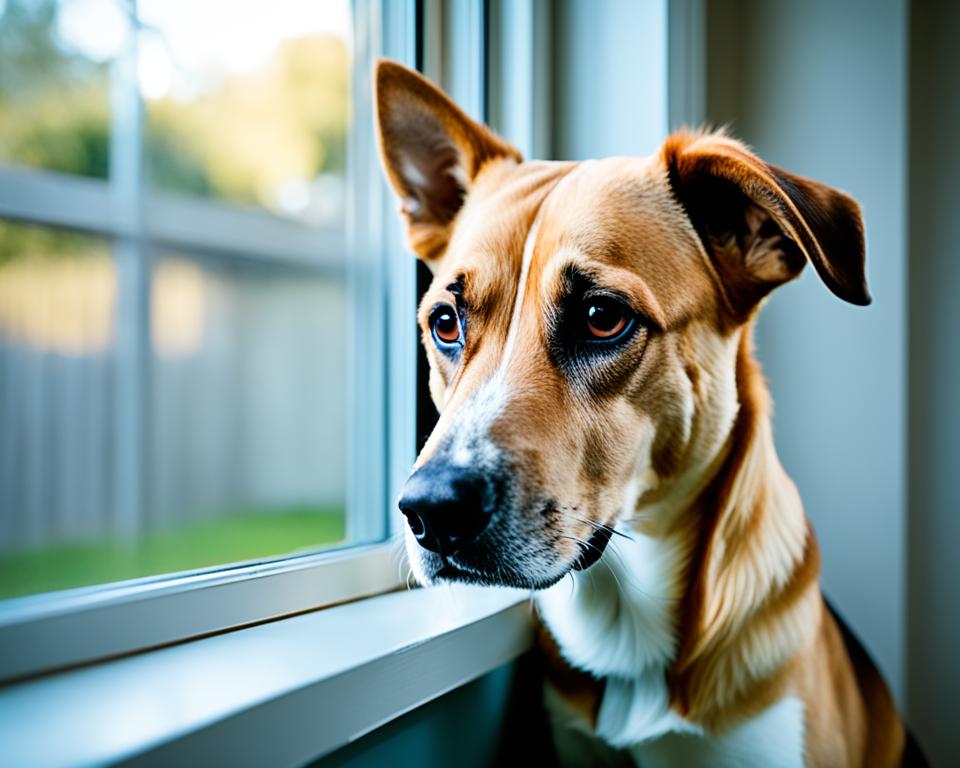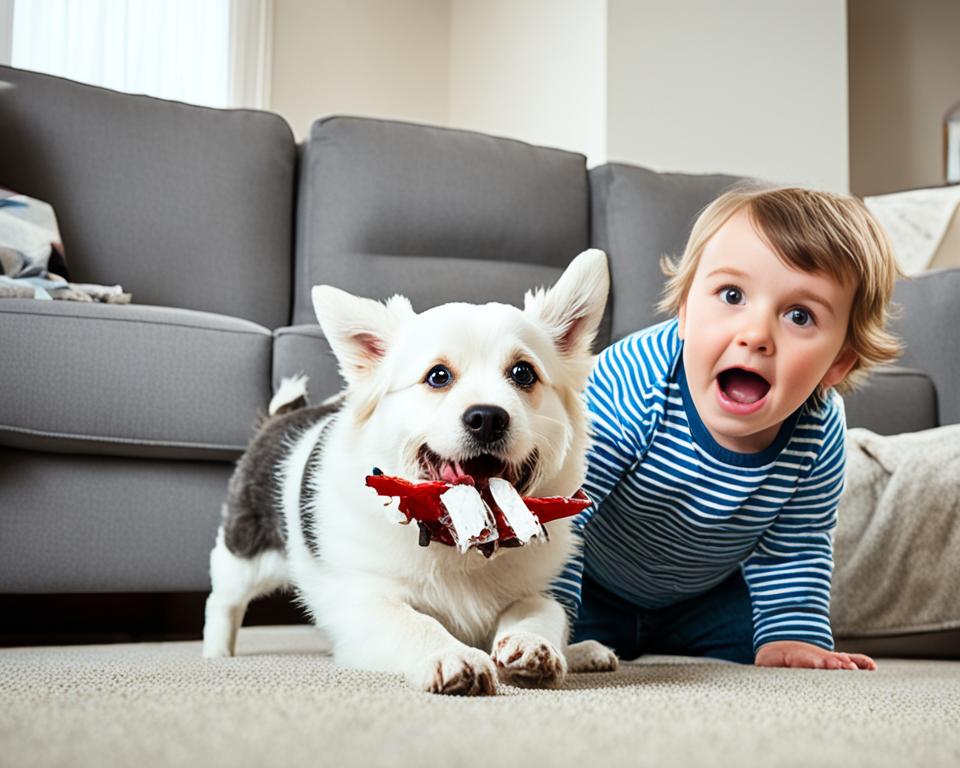As a dog owner, I’ve learned that knowing our furry friends’ behavior is key to a happy home. In the U.S., 65 million households own dogs. But did you know 47% of dogs are rehomed because of behavior issues? That’s why it’s crucial to tackle these problems head-on.
Dog obedience training has changed the game for me. It helps fix issues like too much barking, chewing, and separation anxiety. These problems often come from boredom, fear, or not being socialized enough. By finding out the cause, we can solve these problems and strengthen our bond with our dogs.
This guide will give you insights on different dog behaviors, what causes them, and how to fix them. Whether your dog is scared or loves to chew too much, we’ll find ways to help. We’ll turn these challenges into chances for growth and better understanding.
Recognizing Normal vs. Problematic Dog Behaviors
As a dog owner, I’ve learned that knowing how dogs act is key. Not every dog behavior is bad, but some warn of big problems. Let’s look at what affects dog behavior and how to notice issues.
Factors influencing dog behavior
Dogs act based on many things. Their genes and early meeting with other animals matter. Also, what they’ve gone through before affects them. For instance, a rescue dog might be scared or aggressive because of past bad experiences.
Signs of behavioral issues
Some dog behaviors are okay, but others warn of problems. Too much barking, chewing things they shouldn’t, and being aggressive are signs. Here’s a quick guide:
| Behavior | Normal | Problematic |
|---|---|---|
| Barking | Occasional | Excessive, disruptive |
| Chewing | On toys | Destructive |
| Aggression | Rare, mild | Frequent, intense |
When to seek professional help
If your dog’s behavior is too much, hard to handle, or is dangerous, get help. Vets can check for health problems and suggest what to do next. Early help is important for dealing with fear and aggression in dogs.
“Aggression is the most common problem in referral practices across North America, comprising approximately 70% of the caseload.”
Understanding these things helps us tackle and stop dog behavior problems. This makes life better for dogs and their owners.
Excessive Barking: Causes and Solutions

Excessive dog barking is a common issue for pet owners. It can be really frustrating when your dog won’t stop barking. Let’s look into why dogs bark too much and what we can do about it.
Dogs bark for many reasons. Some bark because they are bored or lonely, especially when left alone. Others bark to alert us to threats or to get our attention. Sometimes, it can mean they have anxiety or pain.
To fix this, we need to find out why they bark so much. Keep a diary to track when and why your dog barks. This info helps in finding a solution.
“How do I stop my dog from barking?” is a common question at AKC GoodDog Helpline.
Here are some ways to cut down on excessive barking:
- Give them lots of exercise and fun activities
- Teach the “quiet” command with treats and praise
- Help them with anxiety or fear with special training
- Keep them away from things that make them bark
Being consistent is important when training your dog. If it doesn’t work, get help from a pro dog trainer or behaviorist. With patience and the right steps, your dog can be quieter and happier.
Destructive Chewing: Managing Your Dog’s Natural Instinct
Dogs love to chew. It’s a natural behavior that starts in puppyhood and lasts a lifetime. But, if not managed, it can turn into a big problem.
Understanding Why Dogs Chew
Puppies chew to ease teething pain, which lasts about six months. Adult dogs chew due to boredom, anxiety, or curiosity. Sometimes, health issues like dental or stomach problems make them chew more.

Providing Appropriate Chew Toys
To stop destructive chewing, give your dog safe chew toys. Use rubber toys, puzzles with treats, and edible chews like bully sticks. Change toys often to keep things fun and prevent boredom.
Training Techniques to Discourage Destructive Chewing
Being consistent is key when stopping bad chewing habits. Watch your dog and give them chew toys when they try to chew on the wrong things. Reward them for chewing the right things.
| Strategy | Description | Effectiveness |
|---|---|---|
| Anti-chew spray | Apply to off-limits items | Moderate |
| Pet gates | Restrict access to certain areas | High |
| Crate training | Provide safe space when unsupervised | Very High |
| Exercise | Reduce excess energy | High |
Managing dog chewing takes patience and consistency. By understanding your dog’s needs and giving them the right things to chew on, you can stop destructive chewing. This keeps your home peaceful.
Separation Anxiety: Helping Your Dog Cope with Alone Time
Dog separation anxiety is a common issue that can lead to serious behavior problems. Many pet owners face this challenge when their dogs are left alone. Signs include a lot of barking, chewing things they shouldn’t, and accidents inside.

Separation anxiety usually starts right after the owner leaves. It’s not just being upset; it’s a real panic. Dogs may pace, howl, or try to get out. These actions show they are really upset.
Treating separation anxiety takes patience and being consistent. Here are some strategies that work:
- Gradually get your dog used to being alone for short times
- Give them a special treat when you leave the house
- Make sure they get regular exercise and fun activities
- Use puzzle toys filled with food to keep them busy
First, make sure there’s no health issue causing the problem. Incontinence or frequent urination could look like separation anxiety but might be a health issue. Always talk to a vet before thinking it’s just a behavior problem.
“Separation anxiety is one of the main reasons owners give up their dogs.”
Adding another pet isn’t always the answer and could make things worse. Instead, try desensitization and counterconditioning. With time and effort, most dogs can learn to be okay when left alone.
Dog Behavior Problems: Common Issues and Their Roots
I’ve seen many dogs face behavior problems. These issues can be tough for both dogs and their owners. It’s important to understand what causes these problems to find solutions.
Aggression and Fear-Based Behaviors
Dog aggression and fear are common. They often come from not being socialized or past scary events. For instance, a puppy not meeting different people might be scared and aggressive with strangers. It’s important to deal with these early, as they don’t fix themselves.
Housetraining Difficulties
Adult dogs can have trouble with housetraining for many reasons, like health issues or not being trained well. Being patient and using positive methods is key. Remember, you can still teach an old dog new tricks!
Excessive Energy and Hyperactivity
Dogs with too much energy often act out. This can be from not getting enough play or mental work. Giving them more to do and regular play can help them calm down and behave better.
| Behavior Problem | Possible Cause | Potential Solution |
|---|---|---|
| Aggression | Lack of socialization | Gradual exposure to new experiences |
| Fear | Past trauma | Positive reinforcement training |
| Housetraining issues | Inconsistent training | Establish routine and reward success |
| Hyperactivity | Insufficient exercise | Increase physical activity and mental stimulation |
To fix dog behavior problems, we need to find the cause and use the right strategies. Sometimes, you might need expert advice. Remember, being consistent and patient helps your furry friend get better.
Positive Reinforcement: The Key to Behavior Modification
Positive reinforcement is key in dog obedience training. It rewards good behaviors, making dogs want to do them again. It’s important to give rewards right after the behavior to link them clearly.
When dealing with dog behavior issues, I teach new behaviors instead of punishing old ones. This approach works better and is less stressful for dogs and their owners.
- Use verbal cues like “sit,” “stay,” and “come”
- Reward with treats, praise, petting, or toys
- Be consistent among family members
- Vary reward frequency to maintain motivation
Positive reinforcement, like clicker training, has shown great results. Dogs learn to be more social and less aggressive. It’s great for both pets and their owners!
| Traditional Training | Positive Reinforcement |
|---|---|
| Punishment-based | Reward-based |
| Can increase fear and aggression | Improves social engagement |
| Limited long-term effectiveness | More reliable behavior changes |
| Stressful for dogs and owners | Emotionally beneficial for both |
Successful dog training starts with us. Using positive reinforcement, we can make our dogs happier and better behaved.
Preventing Future Behavior Problems: The Importance of Early Socialization and Training
Early socialization is key for puppies. The first 14 to 16 weeks are the best time. This is when puppies meet new people, animals, and places. It helps stop future problems like aggression and anxiety.
Start obedience training early too. Keep training short, 5-10 minutes, to keep puppies focused. Teach basic commands like “sit,” “stay,” and “come.” These are important for good behavior. Puppy socialization classes are perfect for learning in a safe way.
Socialization isn’t just about dogs. Early gentle handling makes puppies okay with grooming and vet visits. Slowly introduce your puppy to new places and things. Always use positive rewards. This helps them be confident and adaptable, lowering the chance of behavior issues later.
If your puppy shows aggression, fear, or anxiety, act fast. Get help from a professional dog trainer or vet behaviorist. Quick help can stop big behavior problems later. It ensures a happy, well-adjusted adult dog.

